Reportage

Photo: Collected
State aspiration, peasantry and historical convergences: A summarized introduction
Alliances, state making and history
The roots of the 1971 Liberation War linked to state making goes back to the people's resistance against British colonialism and its local agents. It went through several stages of maturing before reaching 1971. This progressed from (a) socio-economic resistance to political action in 1857. (b) Sub-state making in Bengal in 1905 and its political resistance: (c) 1. Lahore Resolution based independent state making phase that was later cancelled by Jinnah and All India Muslim League in 1946. 2. United Bengal state Movement in 1947 voted out by the Indian Congress in 1947: (d) Birth of the subsumed state of "Bangladesh" in 1947 and movement for a full state from 1947 to 1971.
The Liberation War of 1971 therefore has a long continuous history.
In this process, the peasantry played a critical role in alliance with other classes.
Under British colonialism, the conflict was with the zamindar and other collaborationist classes, first at Bengal and later at the All Indian level. Under Pakistan it was with the central capital Karachi/Islamabad and its collaborators in East Pakistan including pro-centre politicians. During 1971, it was with the Peace Committees and Razakars. The objective of the collaborators under both regimes was the same, sustaining external domination.
The country's experience under Pakistan rule and British colonialism was a continuation of the same type/system of governance. But just as oppression was continuous so was resistance. The conflict peaked in 1971 as a point of historical conclusion.
Peasants/poor made up the overwhelming majority of people under both regimes with a smaller middle class ally. Demographically dominant, the peasantry, in alliance with middle class political leadership is the main state making force in this region.
The peasantry doesn't/didn't fight alone nor did they lead the struggle in either regime including in 1971. They formed the bulk of the forces of resistance and it's their alliance with other groups and classes that ensured victory. Historical achievements in sub-state and state making processes over time were a result of many such alliances. All the participants had been negatively affected by Pakistani and British rule.
From colonial Bengal to independent Bangladesh
The process of Bengal becoming Bangladesh can be clustered under several phases.
1. (1757-1857) Social protest and resistances: This phase begins with the Fakir-Sannysin resistance in 1760, an alliance of Hindu and Muslim rural religious leaders supported by the peasantry against British taxation. This was followed by a series of peasant resistances that declined only when peasants were granted limited voting rights in 1909.
Many resistances including the Faraizi movement (1812-1850) created large scale social networks of the majority community peasantry and the middle peasantry who became significant political players later on. It was also helped by the economic rise of these classes in the rural areas.
During the Sepoy Mutiny (1857), the zamindars of Bengal supported the British but the peasantry joined the resistance. After 1857, the Muslim middle class grew across India including Bengal which the British promoted. They wanted another group to depend on other than the dominant Hindu elite. Both groups were privileged, not faith based communities. These two elite communities conflicted too which influenced Bengal history as well.
However in Bengal, the peasants and activists followed an independent stream of history rooted in resistance. With 1857, the politicization of social resistance began.
2. 1857-1905-11 - Birth and resistance to sub-state formation: Collaboration, resistance and competition were all prominent as colonialism weakened from 1857 onward. Notable milestones were:
* The birth of the East Bengal sub-state (1905), supported by the peasantry and resisted by the Kolkata elite.
* Elections of 1937 that turned peasant power from armed resistance to votes and electoral victory leading ultimately to state making.
The internal divisions in Bengal indicated that the colonially imagined "One Bengal" could not be sustained though it served the Kolkata elite class of the Swadeshi's interest. Rise of the Bengal sub-state was interpreted by the Kolkata elite as a threat to their wellbeing but the peasantry saw it as an opportunity.
Through this sub-state production, Britain not only intended to promote the counter elite to the Kolkata elite to extend its rule but was hoping to diffuse the challenge from a militant peasantry also.
The opposition to the new sub-state by the Swadeshi movement didn't signal the birth of a new hostility. It was recognition of a long standing one that had grown under colonialism between the elite and the peasantry. The established and the aspirant elite also conflicted over the sub-state formation and annulment.
The sub -state making movement and the mainstreaming of peasant power into national politics was a game changer. Social resistance was formalized not just at socio-economic but at territorial levels as well. Voting rights granted to the people manifested its power through the elections of 1937 and 1946 that made the political conclusion almost inevitable.
3. 1905- 1947: From sub-state to subsumed state.
This period saw the final political milestones under British colonialism. These are:
* Annulment of the East Bengal sub-state in 1911.
* Recognition of full state status for Bengal (Lahore Resolution, 1940) by Muslim League which ultimately led to 1947 state making of Pakistan.
* Changing of sovereign independent full state status for Bengal by the Muslim League to a single Centre dominated state (1946)
* Rise and end of the United Bengal independent state movement by the Indian/Bengal Congress in 1947 followed by its resolution for the "partition" of Bengal.
Peasantry in colonial politics
In this formal period of politics under colonialism, the victory of Bengal Muslim League and Krishak Proja Party under Fazlul Haque changed power equations within Bengal in 1937. In Lahore 1940, the "sovereign independent" state resolution was passed by the Indian Muslim League which defined politics in Bengal. Various groups began to discuss "Independent East Pakistan''. The victory was possible largely due to peasant power exercised through votes which was later confirmed in 1946 when absolute majority was won by the BML in Bengal.
But in 1946, as in 1970, "Pakistan" refused to hand over power to an independent East Pakistan/ Bengal. Jinnah's Muslim League changed the status from "states" to a single "state" at a Delhi meeting after the elections. Denying an independent state status in 1946 to the East, Pakistan became a centralized state, located in West Pakistan. It was dysfunctional from birth lasting only 24 years.
In 1947, Bengal Muslim league initiated a "United Bengal Movement", an attempts to create the "Third Dominion" but in June 1947, Bengal Congress under pressure from All India Congress led by Nehru squashed the move and took the resolution for the "Partition of Bengal."
It was an admission of a reality that the Kolkata elite-led Bengal belonged to another history from the peasantry of Bengal and its political allies and leadership.
4. 1947- 1971 : From birth of a "false " state of Central Pakistan and subsumed state of "Bangladesh"/ East Pakistan in 1947 to independent Bangladesh in 1971.
Key milestones are:
* The birth of Awami (Muslim) League in 1949, effectively a continuation of the marginalized and the peasant based Bengal Muslim League.
* Opposition to mono state language policy which would exclude educated Bangla speakers from government jobs, media etc. In 1952, police fired on language issue protesting students generating militancy among the middle class lasting till 1971.
* United Front victory (1954) in East Pakistan which sealed the political unity of the subsumed state confirming its political separation from "Pakistan".
* Martial Law of Ayub Khan (1958) and various "independent state" initiatives by political groups including AL members. (16)
* 6 points movement of the AL (1966) and counter attack by Pakistan including the Agaratala conspiracy trial and public resistance in response. (1969).
* Martial law by Yahya Khan to secure an at-risk Pakistan.
* Elections of 1970 swept by the AL based on 6 points
* Non-cooperation and resistance from March 1971 onwards after power hand over refusal by Yahya Khan.
* Speech of 7th March signaling a return to resistance from voting as a strategy after six decades by the Bengal peasantry and its allies.
* Crack down of 25th March and formal independence declaration as the war of 1971 began.
From a "False" state to a full state of Bangladesh
East Bengal/East Pakistan/Bangladesh which carry the same historical meaning are a journey from a sub to a full state. Pakistan is arguably a "false state" that is it never fulfilled the requirements of either history, politics or economics of a full state. There is no commonality in the movement leading to 1947 of West and East Pakistan.
From 1947, it was driven by high conflict. Pakistan was a sort of "Muslim India" and its main focus was battling the "Hindu India" with "Kashmir" conflict as the centerpiece. The rise of the army-feudal state was inescapable given this confrontational equation.
Bangladesh emerged from a very different history before 1905 and afterwards. After 1947, its main enemy was Pakistan not India and the East-West relationship was what many scholars call "internal colonialism."
Barring a flag it didn't fulfill the criteria of a full state going by shared history. By 1948, Dhaka was observing strikes and by 1952 clashing violently with central forces. The birth of Awami Muslim League (AML) was probably the most accurate indicator of the continuity of the pre 1947 struggle as the Centre changed from Kolkata/Delhi to Karachi but the Margin - East Bengal/East Pakistan - did not.
The 1954 elections confirmed the independent historical identity of Bangladesh. Pakistan accused the United Front leader Fazlul Haq of "secession", the first public accusation which shows Pakistan was quite aware of the trend. The threat was publicly repeated in 1957 by Maulana Bhashani.
After martial law imposition in 1958 by Gen. Ayub Khan, many groups planned independent state moves. "Pakistan '' really never made a landfall in East Pakistan because the two were not part of a single state at any level and at no time in history.
The role of 6 points
The 6 points(1966) declared by the AL was the biggest blow because it argued on the basis of the historical/ political roots of the 1940 Lahore Resolution based Pakistan which Jinnah had denied in 1946. It was based on a confederate state model in which Jinnah's core idea- central control- would cease. The governance ideology of Pakistan was reflected in Jinnah's speech at Dhaka in 1948 where the system was centralized. Conflict with India made the military its core and its guarantor.
6 points contested that position. In its state imagination, the main focus would be autonomy not central control and primacy of the armed forces.
Kashmir was absent in the 6 points and both military and finance would be independent for the provinces. By ignoring the then Pakistan's central objective - contest of India- that guaranteed the military's role as guarantor of the state, 6 Points became the biggest threat to their supremacy, the state and its guarantor.
The 1946 decision to alter the Lahore Resolution, Jinnah's policy against "provincialism"(1948), martial law of Ayub Khan (1958), Agaratala conspiracy case (1968) martial law by Yahya Khan (1969), refusal to hand over power after 1970 elections and the crackdown of 1971 were driven by the same impulse of central control.
Sheikh Mujibur Rahman : Political roots and Historical identity
Central to the understanding of Sk. Mujib is his autobiography, "The Unfinished Memoirs" where he discusses the social conflicts and convergences of his early life which shaped his mind. The semi-rural Gopalganj and his emergence into Kolkata politics can be linked together to form a common political narrative.
Unlike other leaders - Gandhi, Jinnah, Nehru, Subhash Bose or even Suhrawardy - he didn't have a London education which probably influenced them to adopt a centralized notion of the Westphalian state. He was more indigenous, more free from Western ideas about decolonization.
Sk. Mujib was not a peasant but a person from a class/group who have historically been linked with peasant resistances as their mentor and leaders. The turmoil around the establishment of East Bengal, the resistance by the Swadeshis led by Kolkata, the rejection of Bengal Pact( 1923) which proposed equity between the privileged minority and denied majority middle class, all impacted on rural Bengal too. The stirrings that began in peasant resistance never quieted down and it pushed up into the national space.
Opposition to East Bengal sub-state's emergence ended almost all efforts to bring communities together. History was interpreted along faith community lines by the Kolkata elite ignoring economic and social history. This interpretation may have helped retain some control in the interregnum in central Indian politics but not long.
In the Margin of Bengal, the agro hinterland where the majority lived symbolized for our purpose by Sk. Mujib's home - the Gopalganj area - it made them more hostile to Kolkata.
The rejection of the Bengal Pact ( 1923) by the Hindu minority leading Bengal Congress indicated the actual nature and state of conflict in Bengal. It was possible to refuse to share middle class access to jobs and resources through resolutions and protests but peasantry was going to be the critical player if there were votes to decide governance policy as history shows.
Colonial Bengal lasted only a decade after the 1937 elections. And the main player was the peasantry whose votes brought the BML and KPP to power and ended colonial Bengal in 1947. The refusal of the UBM proposal officalized the fact that the "One Bengal" concept was probably perceived and based on dubiously interpreted history.
Politics of votes and militancy
Sk. Mujib's conflict with the local establishment was initially at the social level and he had to spend a few days in jail for that. He was not cowed down by anyone. To Sk. Mujib it was clear that it's the institutions that were oppressive not communities, faith or otherwise. ("It was also true that Muslim landlords were treating their Hindu tenants shabbily.")
He was respectful of Bengal leaders like Das, Bose and others but not of the Congress organization which he felt favoured the oppressor. That he would gravitate towards the Bengal Muslim League and KPP alliance which won the 1937 elections was therefore given.
His militancy was obvious in his pre political life too but became prominent when he foiled local Congress youth from preventing Haq and Suhrawardy from holding a meeting. By 1946 was the most powerful youth leader in Bengal. When he mentions guarding the slums of Kolkata in 1946, most residents of those were from East Bengal.
He was also close to Abul Hashim, BML leader of radical ilk, as his bio says, with many others which also influenced him. When the Delhi Resolution (1946) was passed and the United Bengal Movement(1947) failed within a short span, several BML youth formed a clandestine cluster called the "Inner Group" to establish an independent state outside India and Pakistan.
The leader of this group, a close political colleague, - Moazzem Ahmed Chowdhury mentioned that they always thought that the only man who could lead such a movement was "that tall man from Goplaganj".
This "tall man" man shared a history of denial and aspiration with the peasants from the Margin and hinterland. In a way Gopalganj summed up the situation of the then socio-political world of Bengal. That was his historical identity and it was shared with the peasantry, a mutually loyal relationship.
Politics of identity, politics of alliance
Politics is produced by alliances of many identities. This is more so in the Margins which works on the basis of multiple functional relationships not just access to middle class benefits. It also works together with other relationships and identities if and when needed.
The transition from British to the Pakistani phase is a good example. States are resource accessing mechanisms so for the oppressed people any states that do so are good, but don't expect loyalty. This was the case with East Pakistan/Bangladesh peasantry and middle class too.
Bangladeshis were never close to the ideological Pakistan but wanted an equitable resource distributing state system. While India and Pakistan may have been led by ideologues like Jinnah and Nehru/Gandhi, Bangladesh leadership had a different socio-political constituency and history.
Of the younger lot, Sk. Mujib and many others considered 1947 a "betrayal." His political colleague Moazzem Ahmed Chowdhury says that, Sk. Mujib believed that it would be a colony of Pakistan. In fact, the formation of AML in 1949, shows the en masse rejection of the ideological state by which India and Pakistan defined each other by the politicians of East Bengal and East Pakistan.
Muslim League like the Congress was a party of convenience and the peasant based politicians were quick to break the tie when it longer suited them. Thus Awami Muslim League (AML) was a far more authentic political construct that was based on history. It's here that the historical identity was realized.
There were many elements in the construction of the political movements after 1947 but the focus on linguistic nationalism may have been overdone. It's a very important element but not the dominant one. Ethnicity was not the main player of history ever, socio-economic experience was.
Mujib's speech on 7th March is significant because it mobilized the peasantry all over Bangladesh. Although their role is sidelined in mainstream Liberation War history, research shows that no war was possible without their support. A war against 75 million people can't be militarily won.
The peasant connection
Bangladesh in all the four major stages of history was based on multi-class and multi community alliance. The peasantry was the prime player due to its number and its commitment to resistance as it was a livelihood struggle for them. It was not an ideological or community identity but a history based identity.
What connected the peasantry to Sk. Mujib shared history particularly in his formative years that shaped his political self. It's not a contest of cultural identity that motivated him but socio-economic history and right to equity whose denial he himself experienced firsthand.
It's this shared identity that held together the movement for a state for the Marginalized, a continuous struggle under two variations of colonialism. It's this historical identity that defined the role and relationship of the alliance members too that aspired for Bangladesh and its leader in 1971- Sk. Mujibur Rahman.
Maulana Bhashani and the history of convergence
In the history of alliances and convergence, the political history of two politicians, Maulana Bhashani and Sk. Mujib is significant. It shows that both state making and social forces joined hands through them for a common purpose, social liberation and state making.
Maulana Bhashani came from the layer just above the peasantry and had a traditional education which was socially marginalized - madrassah. He went to Assam as an economic migrant and over time became an activist fighting for the cause of poor, immigrants from East Bengal facing discrimination and denial there. It's significant that both Sk. Mujib and Bhashani's constituencies were socially, economically and even territorially the same. In Assam, his fight was against the same Centralism that Bengal Muslim League fought. The blending of multiple identities was subsumed in the struggle for economic rights.
Both belonged to the same political party before 1947 and till 1957, the critical period of state construction under the British of Pakistan. Bhashani engineered one of the great political coups of his time and ensured the joining of Karimganj to East Pakistan through a referendum affirming the territorial identity as well.
Subsequently, the enemy switched as the new centre emerged in Pakistan and Bhashani continued the fight. By 1949, he was the founder of Awami Muslim League which automatically emerged as the East Pakistani version of BML. This was because the aspiration and cause hadn't changed but only the state had. Sk. Mujib became the organizational secretary of the party.
During the 1954-57 phases as politics became increasingly hostile vis-à-vis Pakistan both became radicalized. Maualana's threat to leave Pakistan and Sk. Mujib's activism was an indicator that the Pakistan union was a fake. Maulana Bhashani separated along with the Leftists in 1957 to form NAP. By 1958, martial was established under army chief Ayub Khan and civilian rule never returned to Pakistan. In just 10 years all the political manipulation that led to it had ended and Pakistan was effectively a garrison state.
Between 1958 and 1965, Maualana Bhashani's politics was more all-Pakistani but by 1965 he had begun his return moving away from NAP which had become a party of leftists values but Bhashani belonged much more to East Bengal's poor and their cultural imagination, his original constituency. It also implies that a single identity can't produce political identity but an alliance of identities which together can be termed as "historical identity."
When the Agartala case began with Sk. Mujib was accused number one, East Pakistan saw an uprising with streets taking over in the process of formal take over. In this turmoil, as the trial was on, Sk. Mujib sent a message to Bhashani to begin the movement against Pakistan. The message was carried by journalist Ataus Samad from the courtroom to the Maualna. The uprising ended with Ayub Khan but he was replaced by another army chief Yahya Khan and martial law moved to the final phase. It also showed that the political objectives of both Bhashani and Mujib were the same at the macro level.
Subsequent decision of Bhashani not to join the elections also favoured the AL victory. As Maualana Bhashani didn't seek state power and nor had an organization to back that aspiration, he became a social force where state power was not the objective but state seeking was. Hence the informal political alliance suited him the most and the history he came from.
Summation
No class or groups were exclusively responsible for the birth of Bangladesh and its formal formation as a state. But in this taking many decades and located in the struggle against oppression against various versions of colonialism, the peasantry contributed the most, led by the middle class. Historical narratives need to reflect that reality.











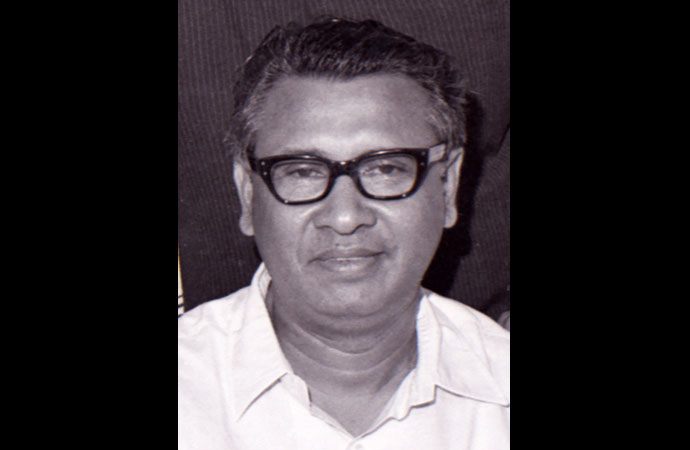







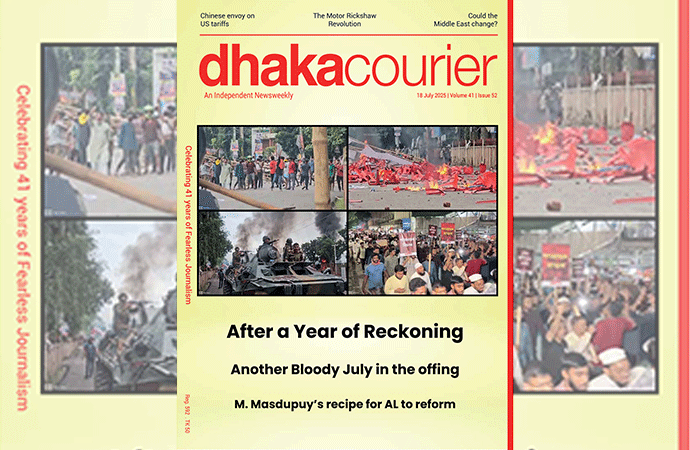
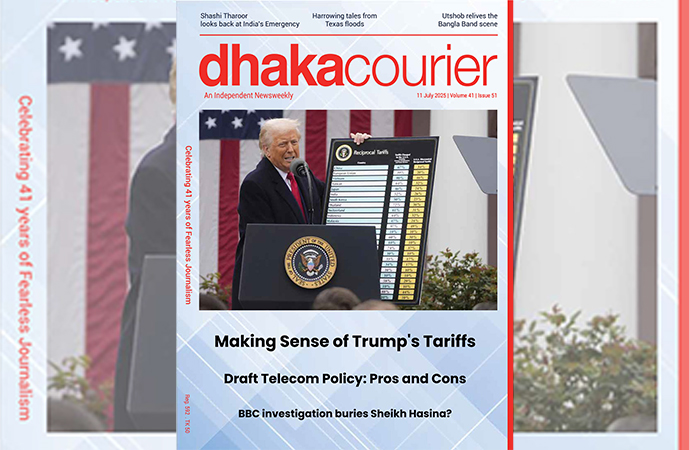
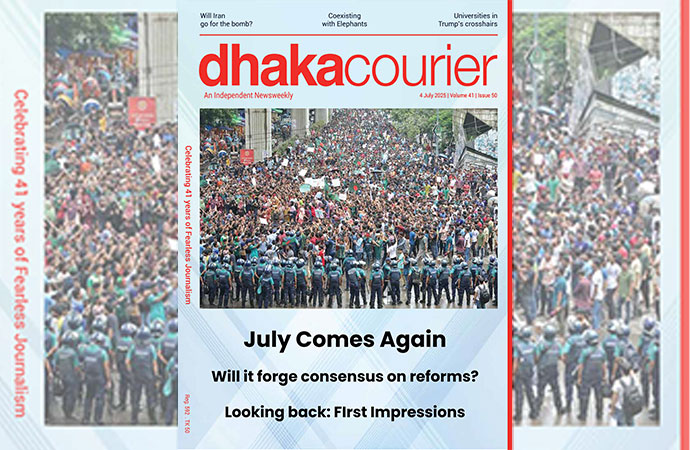
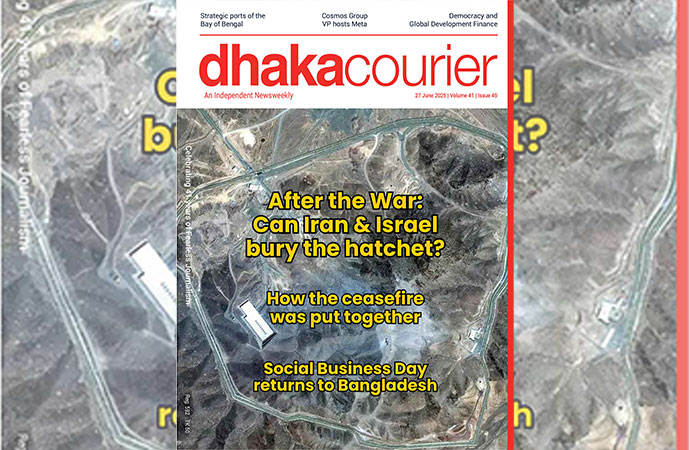
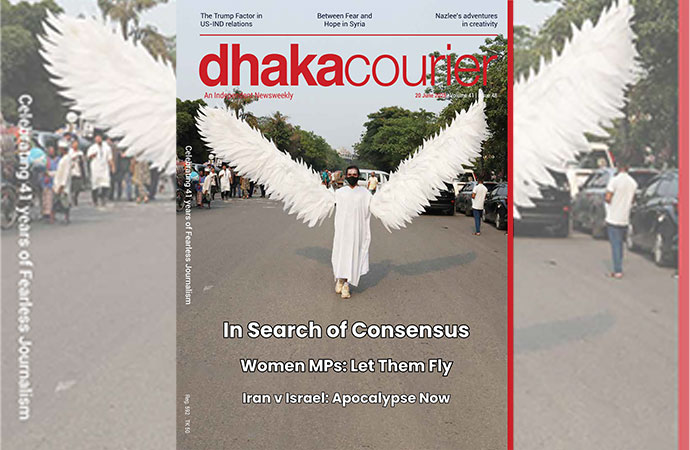

Leave a Comment
Recent Posts
Wrestling legend Hulk Hogan di ...
Hulk Hogan, the iconic mustachioed showman who helped transform profes ...
‘Punoray: shaping the future, ...
In a compelling initiative that seeks to bridge art, craft, and the st ...
Rangamati mourns death of Ukya Ching Marma in Milest ..
Uttara plane crash: A guardian’s last act of love
BIMSTEC for addressing security challenges that hind ..
The longest week yet, in Bangladesh 2.0